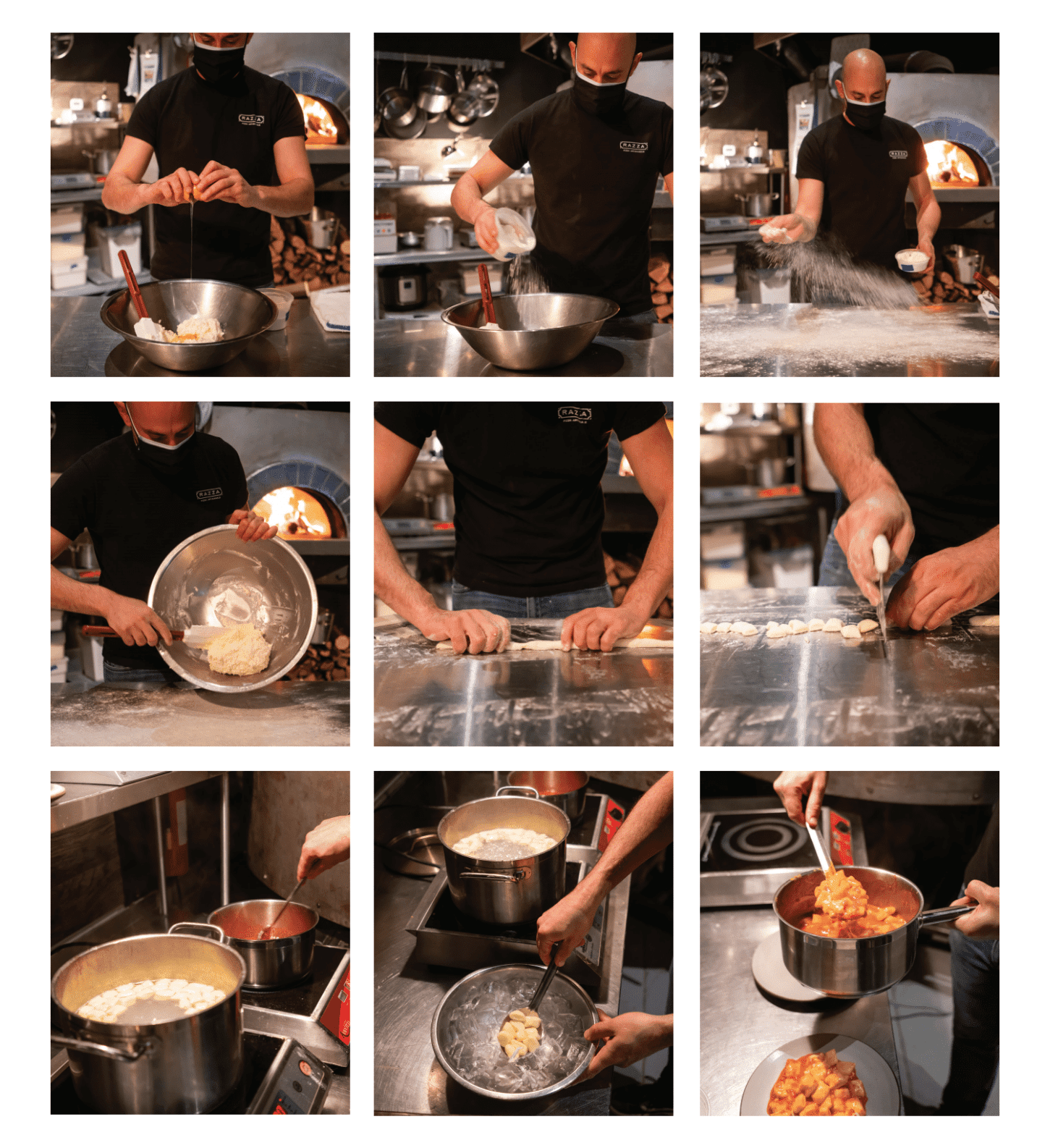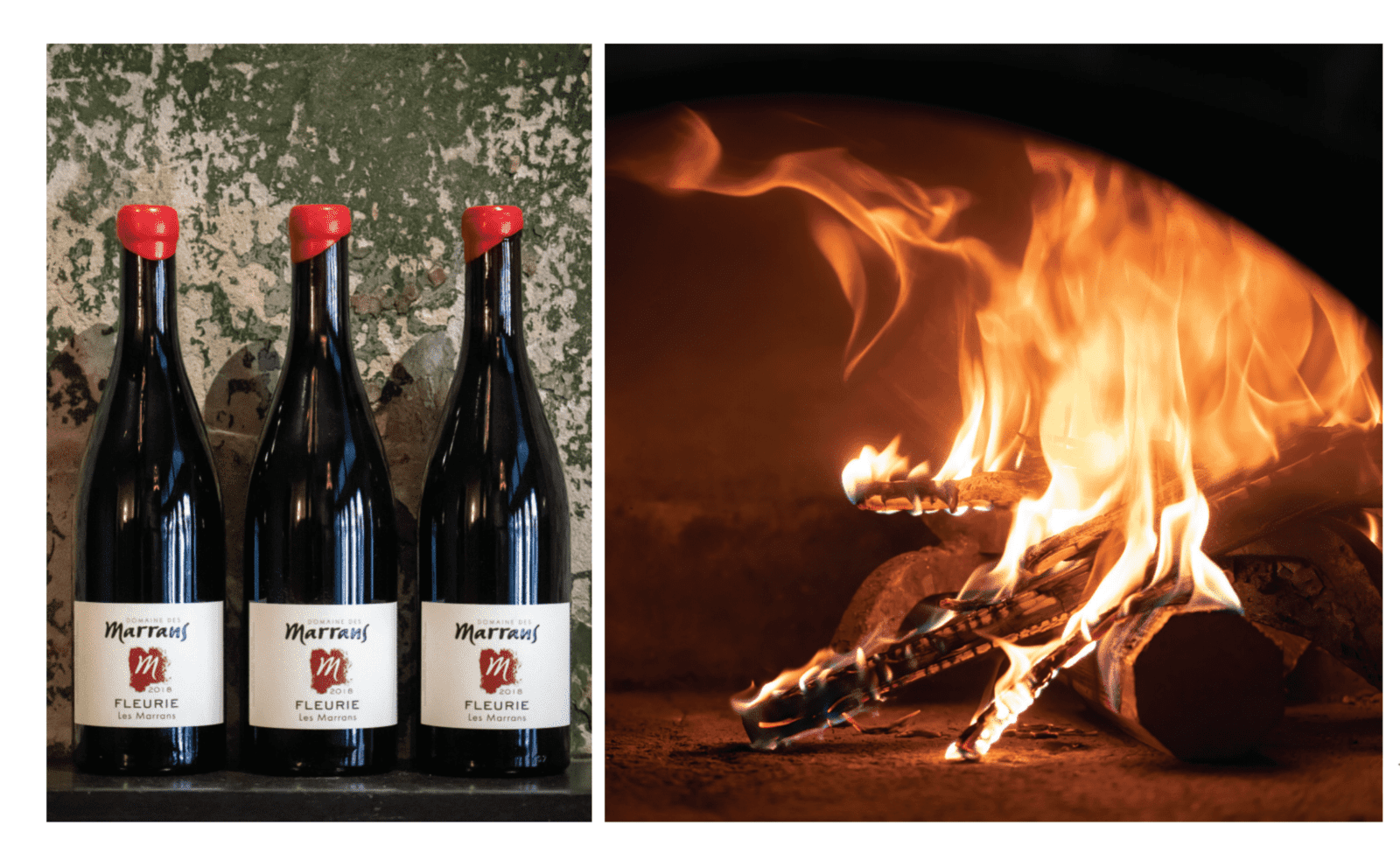
Photographed by James Worrell
When chef Dan Richer looks back on the pivotal moment of his career, he doesn’t bring up the 2017 New York Times review that called his pizza the best in New York—even though his restaurant, Razza, is actually across the river in Jersey City, New Jersey. He doesn’t point to the pizza cookbook that will be published this fall, or the five times he’s been a semifinalist in the James Beard Awards, the Oscars of the restaurant business.
Instead, Richer traces his intense passion for cooking to the moment he ate ricotta gnocchi with tomato sauce. “These light, feathery pillows,” cooked by a college friend who often cut class to watch the Food Network, bore no resemblance to Richer’s previous experience with the dish. “How have I never tasted this before?” he wondered.

Eventually, this experience made Richer decide to visit Italy, where his cousin was studying, and where he ate two more revelatory plates of gnocchi, one in Tuscany and one just outside Naples. “I had eaten gnocchi with tomato sauce before, but the tomato sauce was so different than anything I had tasted and the gnocchi were like pillows, and I wanted to know why. And it was that curiosity that led me to return from the trip and start cooking. I started cooking batches of tomato sauce for my family. And then I started going to farmer’s markets, and talking to farmers.”
In 2012, Richer opened Razza, a wood-fired pizzeria that turns out beautifully blistered, meticulously constructed pies. Richer and his staff submit every ingredient to endless rounds of blind taste tests: this includes the flour, the tomatoes, the pepperoni made in Vermont, the fresh cream Richer uses to make his famous cultured butter, and of course, the cheeses.
“I’m a very curious person,” says Richer, gesturing to the latest batch of dough being mixed in his open kitchen, while fires blaze in two pizza ovens and the scent of meatballs lingers in the air. “I want to know the difference between these two different flours. I want to know what the difference is from a performance standpoint, and from a flavor standpoint. How does it eat? What does it feel like in your hands? What does it feel like in your mouth when your teeth bite through it? I need to be engaged with the product. If pizza dough was like widgets, I wouldn’t be able to get out of bed.”
Richer regards his food as a “constantly evolving, constantly changing, living, breathing, thing,” and he is willing to go to great lengths to follow the path where it leads. Another pivotal moment in his career was when he first tasted mozzarella made from the high-fat milk of Jersey cows that graze right next to the cheesemaking facilities of Jersey Girl Cheese, about 50 miles from his restaurant. “Extraordinary flavors,” he says. “You can taste what the cows are eating.”
Richer decided he needed to do everything he could to share this mozzarella with his customers, even if it required changing the way he made pizza. “Typically, we’ll spread sauce around the entire surface of the pizza,” Richer says. But this mozzarella melted and flowed so broadly on the crust “that we actually had to create resistance to slow down the melt.” So, instead, he drops spoonfuls of the sauce over the crust. “As the cheese melts, there’s resistance through its contact and friction with the dough, as opposed to there being moisture everywhere.”

Richer cites this adaptation as indicative of the way in which he is willing to change the preparation of a dish to incorporate a particularly special ingredient. “We alter our approach to meet the needs of the individual product. And we take that approach to all of our ingredients, cheeses, tomatoes, flour, everything.”
Salvatore Pisani, the cheesemaker who owns Jersey Girl, says Richer stands out for his willingness to not only acknowledge the variabilities in his artisanal cheese, but to celebrate them, and take the time to explain them to his customers. Many other chefs, Pisani says, are simply looking for a stark white cheese.
“Our milk changes throughout the seasons,” Pisani says. The cows are grazing in the summertime, so the milk and cheese might be a little more yellow. Throughout the winter, it becomes white, because they’re not eating as much fresh grass.” Pisani loves hearing Richer say to his guests, “This is the real deal.”
The resulting Jersey Margherita—topped with Jersey’s Girl’s mozzarella, local tomatoes, and basil baked onto the pizza—is a pie that Richer enjoys comparing with Razza’s classic Margherita, which features housemade mozzarella, “the best tomatoes that I can possibly find,” and fresh basil added after baking. “They’re both margherita pizza: tomato, basil, mozzarella, right?” However, at Razza, the pizzas are “two completely different experiences.”
The married father of two young children was planning to open a second restaurant next door before the COVID-19 pandemic, but has since decided to expand Razza so that he can make more of his in-demand pizzas and bread. “I’m constantly evaluating what we do on a daily basis, because it has to be better tomorrow than it was today,” he says. “We take one small step forward every day, whether it’s tasting a new ingredient, or trying a new chicken dish, or visiting a flour mill, or visiting an olive oil plant. One step forward leads to the next step forward, and we just keep going. Just keep moving forward.”
That goes for both the pizza and for Richer himself. “I want to get better as a human, as a cook, a leader. I still feel like I’m at the beginning of the journey.”

Dan Richer’s Ricotta Gnocchi with Tomato, Basil, and Mozzarella
Ingredients
- 16 ounces ricotta cheese preferably hand-dipped
- 2 eggs
- 150 grams all-purpose flour about a cup plus a tablespoon, plus more for dusting
- About two cups 280 grams rice flour, for dusting the gnocchi
- 25 grams kosher salt about 2½ tablespoons, plus a pinch more for the sauce
- ¼ cup extra virgin olive oil plus more for drizzling
- 24 ounces canned whole plum tomatoes crushed by hand or in a food mill (recommended brand: Bianco DiNapoli)
- 6 ounces fresh mozzarella cheese
- 12 fresh basil leaves
- 6 tablespoons grated Parmigiano-Reggiano cheese
Instructions
- ► Bring six quarts of water to a boil in a large pot.
- ► While water is heating, add ricotta, eggs, and all-purpose flour to a large mixing bowl. Use a spoon to slowly mix together, letting the starch slowly hydrate, until dough is a thick, sticky, homogeneous mass.
- ►Dust a work surface with more all-purpose flour. Scoop about 1/6 of the dough onto the surface, sprinkle flour on top of the dough, and use your hands to gently roll into a long rope, approximately ½-inch-wide. Use a bench knife or dough scraper to cut the dough into ½-inch-long square pieces.
- ► Dust a rimmed baking sheet with rice flour. Transfer gnocchi to baking sheet and dust thoroughly with rice flour. Repeat with remaining dough.
- ►Place a large bowl of ice next to the stove.
- ► When water comes to a boil, add salt. Use the bench knife or dough scraper to transfer about half the gnocchi to the water. Gnocchi will sink, then float as the water comes back to a boil. After the gnocchi begin to float, boil for one minute, then use a slotted spoon to transfer gnocchi to ice water bath. Repeat with remaining gnocchi.
- ►Add olive oil, crushed tomatoes, and a pinch of salt to a large pan or pot and set over medium heat. Bring sauce to a boil, then reduce heat and simmer for three minutes.
- ►Use a slotted spoon to remove gnocchi from the water bath, shaking off excess water, and add to the sauce. Toss, and simmer for three more minutes so that gnocchi can absorb the sauce.
- ►Tear small pieces of mozzarella directly into the pan and mix. Add basil.
- ►Divide among six bowls. Sprinkle 1 tablespoon Parmigiano-Reggiano on each serving, and drizzle with olive oil.




